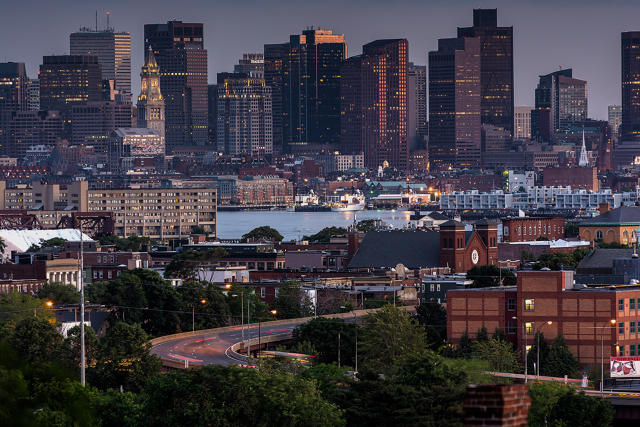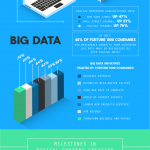within Bloomberg’s Plan To unfold The Gospel Of city Innovation
The billionaire former the big apple mayor is funding city innovation, in the hopes of finding new options to the problems that plague cities around the globe.
may 12, 2015
within the two decades considering Joan Dunlap left her homeland of cell, Alabama, she lived all over the arena—in Japan, the big apple, and Texas—and made a occupation as a a success govt in the finance and power industries.
Now, she’s back in the location she grew up and accountable for an extraordinarily completely different activity: arranging the revitalization of one of the vital mobile’s most unnoticed neighborhoods, working with town’s new mayor. “people who live in this metropolis truly need it, want it badly. the desire is there. Now it’s about the ‘how,'” says Dunlap.
On a latest Monday morning in March, Dunlap—the new director of the mobile executive’s innovation staff—visited the stylish higher East aspect places of work of Bloomberg Philanthropies, the charity of new York’s billionaire former mayor. Joined with the aid of both recent faces to metropolis govt and professional veterans, she was there to get a lesson in civic innovation from the specialists. In all, groups from 14 cities, from locations both small and large and from in every single place the u . s . (and two from Israel), had been there. every have been recipients of latest provides from Bloomberg’s innovation supply program, a $forty five million, three-year experiment in remaking how cities sort out intransigent city issues.

due to the fact leaving ny’s city corridor, Michael Bloomberg has made it his main business to provide away his wealth. His foundation’s mission is rooted in his famous faith that city governments are the important thing to fixing social considerations which are native, national, and even global in scope. In that mild, the muse’s most vital work might be its govt innovation program, which focuses not on any particular problem, but on serving to cities increase their capacity to tackle the large issues themselves.
“The imperative for local leaders to generate new ideas is big and rising,” says Jim Anderson, director of Bloomberg’s executive innovation application. “Governments want the devoted capability, the gap, the danger capital, and the permission to generate bigger bolder solutions to public issues, to check those solutions, and to scale up those who work.”

that is where Bloomberg believes philanthropy can play a wanted role, the foundation believes—serving to governments check out dangerous, new concepts that taxpayers could be unhappy about funding, at the least except they’re confirmed to work.
after all, the innovation supply program is not a bold new concept itself. each and every city appoints what Bloomberg calls an “innovation supply director,” who creates a small crew of consultants that work across all of a city’s sprawling departments and document instantly to the city’s mayor. Their purpose is to take on focused priority considerations—corresponding to crime charges, housing, or well being—and, through a four-step, information-intensive course of, get the ball rolling on new applications that other metropolis departments will later manage. within at most three years, the group is expected to move on to the next issue. this concept builds on what many mayors are already doing on their very own in dozens of cities, establishing chief innovation officers and workplaces. the adaptation is that the Bloomberg program targets to create a simple, confirmed process that any city can easily adopt. the money also helps.
Even Boston, a metropolis that has probably the most longest-working civic innovation places of work in the united states of america—the workplace of recent urban Mechanics—is taking part in this 12 months’s new Bloomberg type. thus far, like many city innovation initiatives, Boston’s work has been about “sooner hits” that are more experimental and technology-based, says Nigel Jacob, co-founder of the place of job. Armed with a $1.35 million Bloomberg grant over three years, the intention is to deal with extra complex issues in additional depth—”to take a more focused lens on this work,” Jacob says. Its first challenge will probably be a Housing Innovation Lab tasked with determining tips on how to create the fifty three,000 units of housing that the brand new mayor has promised with the aid of 2030.

The 14 cities in the present classification are in fact the second cohort to head thru this system, extended from the primary five cities that had been funded in 2012. They have been the take a look at circumstances that the muse has deemed a hit: Atlanta’s crew decreased homelessness, Chicago streamlined licensing for local trade, Louisville sped up the rezoning approval course of, New Orleans has began to decrease its excessive homicide rate, and Memphis found out a new version for revitalizing neighborhoods. (All have determined to continue funding their innovation supply offices in some kind now that the Bloomberg promises are over.)
These experiences weren’t without their bumps, however. The Memphis staff, as an instance, at first wanted to create a “retail strategy” that might raise local regional economies, however realized that no metropolis company that might later take it on. after all, it pivoted to think about it as small business help, a software that helped mom-and-pop shops fortify their outlets.
Now 14 cities will take on new challenges. on the orientation assembly, they had been introduced to Bloomberg’s 4-step plan offered in a shiny “Innovation crew Playbook.” none of the steps are rocket science, however goal to information cities to be methodical and inclusive. Cities that participate on this spherical may also obtain coaching services and products in bi-weekly calls, and will examine to do things like generate speculation bushes and run a crowdsourcing competition. Bennett Midland, a consulting firm hired through Bloomberg, will habits the preparation and record back to the inspiration.
Veterans of this system say that being an innovation team chief isn’t simple. they are anticipated to be “dexterous” and “empathetic,” particularly as a result of they need to ensure that different city companies buy-in to their plans from the start. Stepping on everyone else’s toes is not an choice.

Bloomberg has also created other packages underneath its executive innovation umbrella. The Mayor’s problem is a extra flashy ideas competition with money and publicity incentives that, consistent with Anderson, is ready giving cities permission to “dream large.” the newest, introduced in April, includes spending $forty two million to offer one hundred mid-sized cities with training and collaboration opportunities to “extend evidence-primarily based governance.”
in the back of all of this is an emerging philosophy that Bloomberg is at the forefront of promoting: That cities can collaborate and research from each and every different to higher remedy well-liked challenges, and that the process for urban innovation will also be optimized, written down, and even made into a occupation. All, in fact, take the identical knowledge-driven method its founder used to run new york’s sprawling forms.
however can there in reality be a formulation for innovation? Can an idea that labored in Memphis work the same in cellular? most likely now not at all times, but cities are open to having a process they recognize can work. “town has jumped to quite a few solutions up to now, and obviously the right kind of development hasn’t been made,” says Dianne Irby, an professional in mobile’s city government who attended the Bloomberg assembly with Dunlap. “Having this kind of methodology truly mattered to [the Mayor].”
It’s also tough exactly what you outline as innovation. among the challenges the innovation supply offices are tackling are huge, sprawling issues which were urban challenges for many years. Their new concepts—similar to stepping up gang violence prosecutions to cut back homicide charges—aren’t at all times so new, though they may be new to that exact city. “i believe innovation is just a word for looking to do the issues government at all times finished and do it in one of the simplest ways that you can imagine within the realities and constraints and opportunities in 21st-century governments,” says Hollie Russon-Gilman, a civic innovation fellow on the New American basis who isn’t involved within the Bloomberg program.

Ben Hecht, CEO and President of living Cities, a nonprofit that works with Bloomberg Philanthropies and likewise runs its personal municipal incubator application, compares nowadays’s moment to the early 20th century, when the Rockefeller groundwork mainly built the sphere of public health from scratch through its funding applications.
“What you’re seeing is the start of this box. a part of that’s individuals determining themselves as within the container: ‘i am a municipal innovator,’” he says. “but if everyone has to come up with their very own principles, then the entry prices are too high. you need to create something to be a commodity, this means that you don’t have to customise it like a positive Italian shoe and determine it out your self every time.”
Dunlap could have her probability to change town in the following couple of years. “when I got here again [to Mobile], it was once like a time capsule,” she says. “Many problems plagued town once I used to be residing there. It was once very obvious that they had no longer been solved.”
quick company , learn Full Story
(144)














